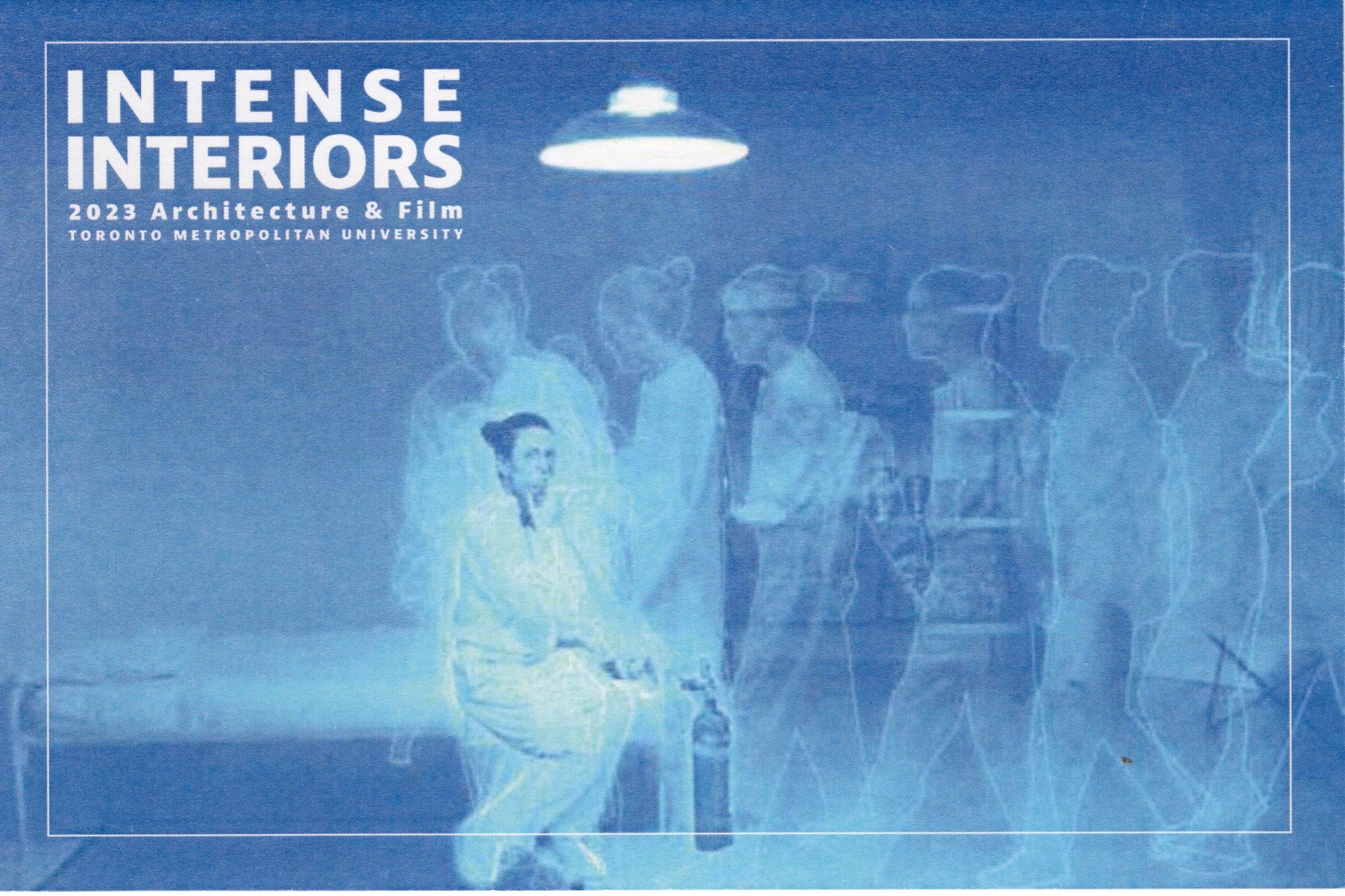
I couldn’t sleep:
the air,
the smell.
With your mask,
your oxygen tank
and your bottled water.[1]
If you can see, look.
If you can look, observe[2].
In its third season, the 2023 Architecture & Film Symposium will shine its cinematic light on intense interiors. It will concurrently expand inwards and outwards from the interior, the buildings to the cities’ streets and urban conditions – while aligning with a heightened awareness of the users of these spaces.
Todd Haynes’ 1995 film Safe, Jose Saramago’s 1995 book, Blindness and later 2008 film and the 1966 book by Harry Harrison, Make Room! Make Room! later adapted into a film in 1973, Soylent Green is part of this years’ symposium selections.
The provocation of Hesitancy + Attunements + Forensics creates a forum to present new academic and creative scholarship in film, interiors, and architecture and extends to our allied fields in disability studies, public health, urban studies, and engineering. The selected films and provocation themes welcome work addressing historical, theoretical, realized and speculative projects while inviting critical and creative discourse in design theory, pedagogy and practice. The peer-reviewed intense interiors symposium aims to expand filmic interiorities and develop new conversations.
Intense Interiors seeks submissions that capture a range of topics and put forth questions to examine the following (but are not limited to):
- Atmospheres of the Interior (e.g., indoor air quality, toxins, pathogens, radiation and chemicals)
- Domestic Interiors, Domestic Goods, Women as Domestic Objects
- Epidemic, Pandemic and Forensic Interiors and Architecture
- Feminine Interiors, Feminist-Queer Interiors, Gender Studies and Sexuality, Intersectional Identity and Histories
- Institutional Architectural Interiors and Vulnerable Persons (e.g., long-term care, hospital, ICU, safety and support)
- Interiority and Emotion
- Proxemics, Personal Space, Territoriality, Urban and Architectural Cinematic Spaces
- Risk Perception, Cultural Theory of Risk and Sacred Contagion
- Rooms (Safe Place, Safe Room, Panic Room, Quarantine Room, Storm Cellar, Bunker, Merkhav Mugan)
- Visible and Invisible (dis)abilities
Attitudes and concepts applied in the 20th and 21st-century cinematic realm of speculative architectural interiority have given us the bone-chilling relevance of our current interior life. We are a generation of educators and professionals having to rethink and revisit our understanding of proxemics, the use of space, and materials. The rules of the game have changed. Gone is a designer’s role as an aesthetic dictator; new prescribed rules about proxemics and materiality are evolving. Inclusivity and safety are fresh ingredients of the discipline.
Historically, the interior consists of ceilings, walls, partitions, windows, and doors. The architect Louis I. Kahn famously noted, ‘Architecture comes from the making of a room – the street is a room by agreement – and the ceiling is the sky.’ Still, defining the interior forces us to rethink the interior as a permeable atmosphere – both an outside and an inside. In the film, Safe and even today, the simple act of taking a breath inhaling in our interior spaces has created a new form of what Di Cintio calls interior hesitancy. How we work, eat, sleep together is now mandated by invisible off-gases, airborne droplets, particles floating in the interstitial spaces and inhabiting our interiors.
By relating to our current concerns, parallel films noting new terms coined by Di Cintio – interior attunements and interior forensics are found in the film Blindness’ epidemic and quarantine protocols. Looking further back to the 1973 film, Soylent Green’s view on limited space and resources – push forth ideas on population control. Practitioners and the public now have a heightened awareness of their interior architectural environments. Many of us wonder – What is inhabiting our ventilation systems in nursing homes, schools, residences, and workplaces? Who defines and controls quarantine spaces? Will we be safe? Will it be accessible? Where is the design ethicist?
This symposium aims to explore ways to comprehend better and, importantly, cope with the new emerging realities of the architectural interior. The symposium asks artists, designers, educators, scientists and audiences to note the potentiality of multiple dialogues built through layered and disparate knowledge practices. The current discourse on new materialism and material knowledge can be a starting point. The rethinking of Edward T. Hall’s 1966 proxemics is racing to the forefront of discussion. Theoretical structures and technical discourses make Katherine Shonfield’s book Walls have feelings: Architecture, Film, and the City another meaningful compliment to the symposium’s discourse aims.
The SARS-CoV-2 pandemic highlighted the need to treat the architectural interior as an emergent space rather than a static one. The need for safety limits and physical-social interaction is trying to be balanced. What if we could see what was in our interiors? How can we imagine alternative formats, new forms of interactions, safer and more inclusive spaces?
_______________________________________________________________
[1] Actors lines from the Todd Haynes’ film, Safe, 1995.
[2] Quote from Jose Saramago’s book, Blindness, 1995, Opening page (from The Book of Exhortations)
